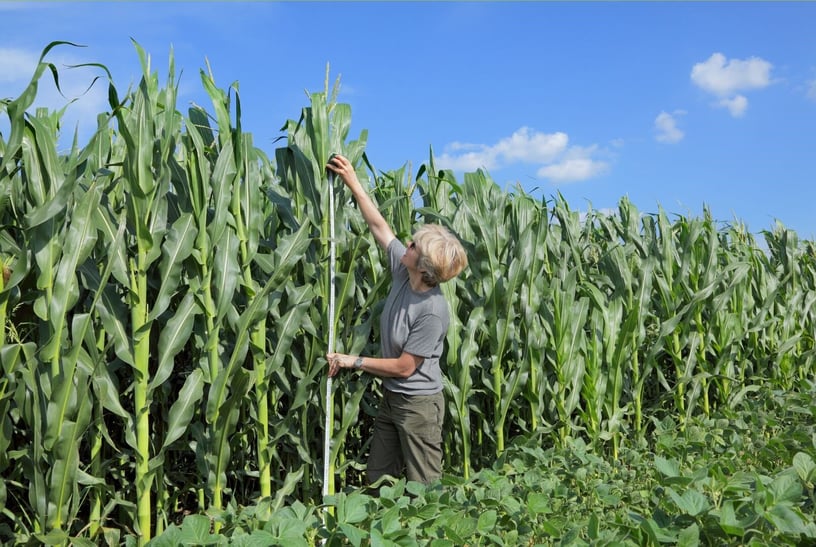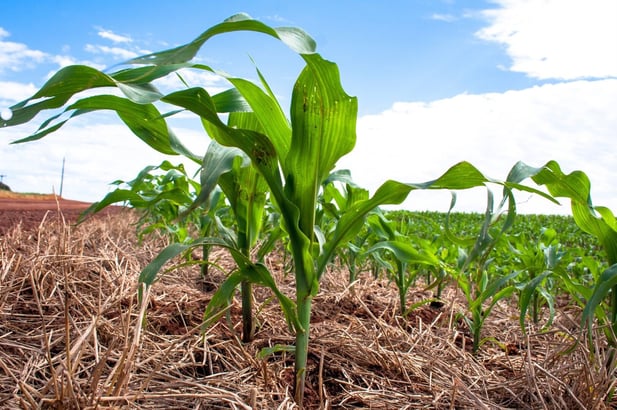Jan 17, 2025
Sustainable Agricultural Systems: Principles, Practices, and Pathways for a Resilient Future

The agricultural landscape has undergone a profound transformation over the past century. The "Green Revolution" heralded a shift from traditional, diverse farming systems to intensified monocultures focused on maximizing yields of cash crops like maize, wheat, and rice. Intensified agricultural practices often rely on heavy mechanization, excessive tillage, and chemical inputs. These methods have resulted in widespread problems of soil erosion, salinization, compaction, and biodiversity loss, all of which threaten global food security and resource sustainability.
However, over the past few years, farmers and nations have shown increased interest in more sustainable farming methods, giving rise to various sustainable agriculture systems and practices. The numerous available sustainable practices are not new to farmers and the sector. The challenge all stakeholders involved in the agri-food sector face is to modernize these "traditional" sustainable practices to fit in with the needs of the current agricultural systems that need to ensure food security for a constantly growing population.
Nowadays, there are multiple sustainable agricultural systems. Many of them share many similarities regarding the practices applied and/or the targeted system (soil, water, etc.), while differences can be found in their main goals. To accomplish this transition, farmers should familiarize themselves with the aspect of its system (learn the necessary sustainable terminology) and choose the appropriate one for their needs and local conditions. Below, we will describe the most important ones, focusing on each key principles and goals.
To obtain more information, you can take the online course “Sustainable Agriculture: Systems, Principles and Practices” available on the “Wikifarmer Academy”
.
Key Sustainable Agriculture Systems
1. Sustainable Intensified Agriculture
Sustainable intensification aims to increase agricultural yields while minimizing environmental impact and enhancing farmer livelihoods. This system emphasizes the following:
- High productivity: Using resilient, high-yield crops and livestock breeds.
- Efficiency: Employing precision agriculture technologies to optimize resource use.
- Waste reduction: Minimizing food loss across the value chain.
A core tool of this approach is conservation agriculture, which focuses on minimal soil disturbance, permanent soil cover, and crop diversification. These practices help sequester carbon, enhance biodiversity, and reduce greenhouse gas emissions. As a scalable solution, sustainable intensification is crucial for meeting global food demands while protecting the environment.
2. Biologically Integrated Farming Systems
Biologically integrated systems incorporate multiple enterprises, such as crop cultivation and livestock farming, to create a circular, self-sufficient ecosystem. This approach prioritizes:
- Synergies between components: Utilizing animal manure as fertilizer or natural predators for pest control.
- Reduced reliance on external inputs: Minimizing chemical fertilizers and synthetic pesticides.
- Knowledge-intensive management: Tailoring practices to specific farm conditions.
By mimicking natural processes, these systems foster resilience and reduce environmental footprints while maintaining productivity.
3. Climate-Smart Agriculture (CSA)
CSA addresses the specific challenges climate change poses through tailored practices that enhance resilience and reduce emissions. Its three pillars are:
- Improved yields: Balancing trade-offs to sustain productivity under climate stress.
- Resilient systems: Strengthening the capacity of farms to withstand adverse conditions.
- Carbon footprint reduction: Implementing practices like improved soil management and agroforestry.
CSA integrates soil, water, and crop management to mitigate the impacts of climate change while securing long-term food production.
4. Conservation Agriculture
Conservation agriculture is widely practiced across 180 million hectares globally. Its principles include:
- Minimal soil disturbance: Reducing tillage to enhance soil health and carbon sequestration.
- Permanent soil cover: Using cover crops and organic mulch to prevent erosion.
- Crop diversification: Promoting mixed cropping and rotation for ecosystem balance.
These practices improve water use efficiency, maintain soil fertility, and support smallholder farmers in developing regions when coupled with technical and financial support.

5. Regenerative Agriculture
Regenerative agriculture focuses on restoring degraded ecosystems and enhancing biodiversity. Core practices include:
- No or reduced tillage: Minimizing soil disruption.
- Diverse cropping systems: Employing crop rotations, cover crops, and rotational grazing.
- Carbon sequestration: Enhancing soil organic matter through plant residues and compost.
This holistic approach not only mitigates climate change but also enhances farm profitability by reducing input costs and improving product quality.
6. Permaculture
Permaculture is a design philosophy that integrates sustainable agricultural practices with human settlement needs. Key principles include:
- Closed-loop systems: Emphasizing waste reduction and resource efficiency.
- Diversity and resilience: Designing ecosystems that mimic natural systems.
- Ethical focus: Caring for the earth, people, and equitable resource sharing.
Permaculture promotes long-term sustainability by creating self-sustaining, adaptable systems.
7. Controlled Environment Agriculture (CEA)
CEA involves high-tech indoor farming systems, including greenhouses and vertical farms. Features include:
- Optimized environments: Managing temperature, humidity, and light for year-round production.
- Resource efficiency: Reducing land and water use while maximizing yields.
CEA offers a solution for urban agriculture and regions with adverse growing conditions.
8. Organic Agriculture
Organic farming adheres to strict standards that prohibit synthetic chemicals and promote biodiversity. Its principles are:
- Ecological harmony: Emulating natural cycles and enhancing soil health.
- Fair practices: Ensuring equity in environmental and human interactions.
Organic systems, practiced by over 3.4 million farmers globally, provide high-value products while reducing environmental harm.

Final remark
Sustainable agricultural systems offer diverse pathways to address the challenges of modern farming. By adopting practices that enhance productivity, protect natural resources, and adapt to local conditions, farmers can ensure long-term food security and ecosystem health. While each system has unique features, they share a common goal: to create resilient, efficient, and environmentally friendly agricultural landscapes. Transitioning to these systems requires collaboration among farmers, policymakers, researchers, and consumers to build a more sustainable future.
Markets play a pivotal role in promoting and prioritizing products derived from sustainable agricultural systems, with platforms like the Wikifarmer marketplace helping farmers reach broader audiences and gain fair value for their produce.
Continuous training and staying updated are equally crucial for farmers, and resources like the Wikifarmer Library, with thousands of free articles, provide invaluable global support to enhance knowledge and practices.
